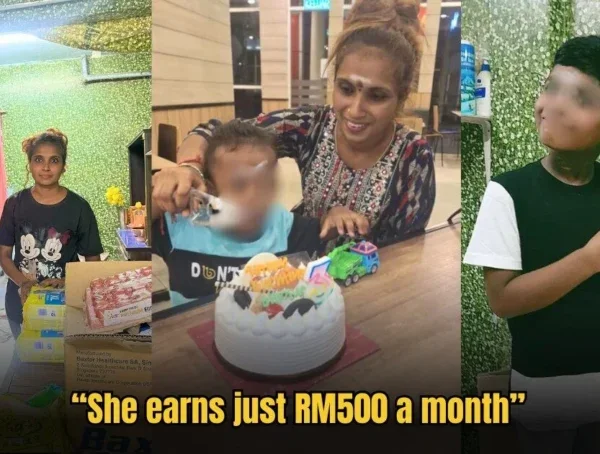By Joy Teo
It’s Scleroderma Awareness Month this June. To raise this awareness, I would like to share my mother’s journey in battling this incurable disease.
Scleroderma is an auto-immune disease that attacks the body via the immune system.
Instead of attacking bacteria and viruses, the antibodies attack the host’s organs such as the heart, lungs, intestines, skin, etc.
But that’s just the tip of the iceberg.
Over time, these organs harden and turn porous, like stone. This usually results in death.
My mother was a warrior throughout her battle with this disease. Below are excerpts from her journal.
“It’s Probably Chilblains.”
In 1982, I was 31 years old and at the pinnacle of my life.
After 6 years of marriage, I had just given birth to my daughter, a healthy girl of 7 pounds.
I had a doting husband, a cozy little house, and was just recently promoted to senior bank officer.
It was truly the happiest moment of my life.
But a year later, I started to notice my fingers turning blue whenever the air-conditioning in the office became too cold.
I consulted a GP. “Oh, it’s probably chilblains. You have nothing to worry about,” she assured me.
So I happily continued with my life.
Other than being blueish and having recurring sore throats and coughs, I still looked and felt fit. I was active in aerobics and would bring my baby girl for swims at a local club.
In 1986, I developed a painful elbow that lasted for months. Then, a blood test revealed that I was rheumatoid positive. With painkillers though, the pain was bearable.
At the time, I wanted to enjoy life without having the arduous task of bringing up another child. So, against the advice of family and friends, I stuck to having only one child.
This was a decision that would haunt me later on.
 Mom and me back in the 80s.
Mom and me back in the 80s.
My Brother Saved Me From A Misdiagnosis
In 1991, crusty disc-like spots began appearing on my joints. These spots marked the beginning of calsinonsis. I was coughing non-stop and I began to lose weight.
A rheumatologist I consulted ran endless tests on me — only to misdiagnose me with SLE, another form of auto-immune disease.
Later in 1993, my brother, a rheumatologist based in New Zealand, came back for a visit.
We had not met face to face in years, so he had assumed that my local doctor had been right about the diagnosis.
But one look at my crooked fingers and hard skin and he knew what I had.
“It’s scleroderma.”
By this time, my condition was visible to the naked eye, and people started to stare.
Out of curiosity and kindness, they would ask what was wrong with me — but it was hard to explain to them because it wasn’t a very common disease.
Still, friends and relatives tried to help.
They offered Chinese herbs, bomoh treatments, and all kinds of traditional treatments. I had to smile through gritted teeth each time I turned down their offers.
By June 1995, my left thumb and toes started to hurt. The pain would be throbbing non-stop and keep me awake at night.
Within months, black spots started to appear on them. My doctor gave me so much medication that I probably could have opened up a pharmacy.
An orthopedist I met suggested having my thumb amputated to stop the spreading of the black spots.
Still, I refused to go ahead with the amputation. No way was I going to lose my thumb. But the pain was so bad that I had to be hospitalized for 3 weeks.
My thumb was dying and decaying right in front of my eyes.
My Colon Was Next
During my stay at the ward, I saw many people dying. And it was during this time that depression started to set in.
I worried for my daughter and had visions of the loneliest moments for her. I felt her grief at our funerals. I felt her anguish should her future husband betray or leave her.
I also put myself in her shoes if she remained an old maid and fell sick with no kin or relative. I could have practically written a blockbuster K-drama with everything that was going through my head.
The stay at the hospital did nothing to cure my disease. So the doctors had no choice but to discharge me.
I was finally discharged with 10 ulcers on my feet and a weight of 35kg. But I was elated to go home and told myself that I never wanted to be admitted again.
I spoke too soon. By the second week at home, I noticed that I was not passing out stools. And I started having severe abdominal pains.
It turned out that my colon was full of microscopic holes due to the hardening of its tissues and I had to undergo surgery.
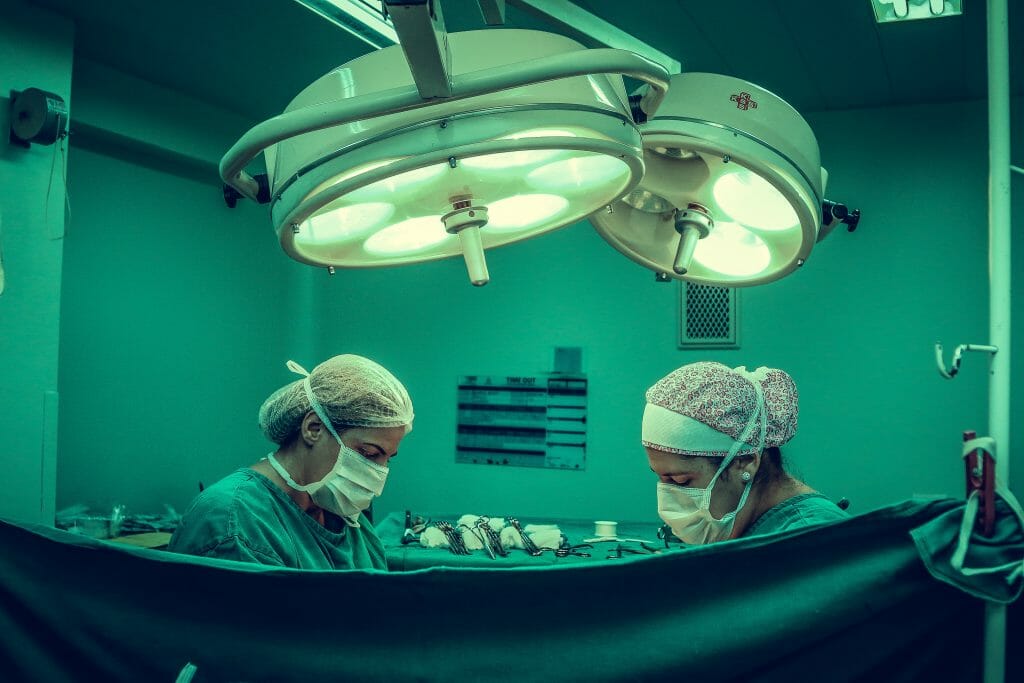
While waiting to be x-rayed, I burst into tears.
I was so traumatized that I didn’t want to sign the consent form. My husband had to put his signature down.
That evening, as I was wheeled into the operation theatre, I prayed to God to look after my family. In the operating room, I felt frozen and my ulcers hurt.
The surgeon saw that I was extremely cold and ordered a thermal blanket for me. Then the anesthetist injected the anesthetic into me and asked me a few casual questions.
After that, I knew no more.
“Madam, madam, the operation is over.”
That was the first thing I heard upon waking up. As I was wheeled back to the ward, I saw my husband beside my bed trolley.
Over the next few days, visitors came in steady streams. Friends from church came to pray for me.
I cried several times because of the uncertainty of my health and future.
The Arduous Task of Looking After An Invalid
9 days later, I was discharged and left the hospital weighing 32kg. The doctor had advised me to be careful with my diet.
I couldn’t eat fibrous food as they would irritate the colon — I was only allowed to drink strained fruit juice for two weeks.
Back home, we began the arduous task of looking after an invalid. I could no longer climb the stairs so my family converted the study room downstairs into a little bedroom for me.
At work, my employer was gracious enough to grant me a 6 months medical leave.
My siblings took turns to look after me when my husband had to return to work, and when my daughter was in school.
My weight gradually increased to a manageable 42kg and by December 1995, I reported for work. However, I was no longer my old self.
My feet were always cold and tingling, I had to wear socks on top of my stockings and shoes one size bigger so that my toes and feet wouldn’t hurt as much.
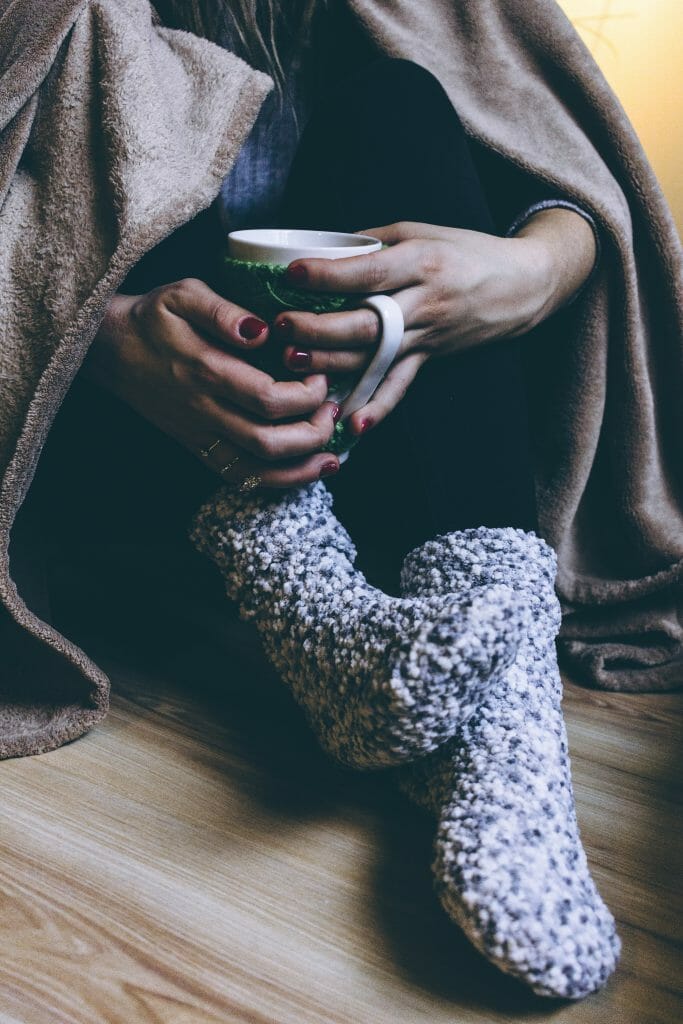
I also had to don gloves as I could not stand the air conditioning. I walked at tortoise speed and my backside suffered from sitting on hard chairs.
Silver cutleries and office equipment felt sharp when I handled them. I could no longer do any cooking or even light cleaning.
In February 1996, the blackened part of my thumb finally dropped off.
This was the new norm for me and I tried to live life as normally as I could.
Still, I continued to get painful joints and blue digits. Over time, I would lose bits of tissues from my toes and fingers. I was forever on medication and my cough persisted.
But I never took a single day’s sick leave in 1996. And for that, I was very proud of myself.
In 1997, I started to have more serious problems.
My right toe started turning black.
Again, my physician suggested having the toe amputated. (I was beginning to think that the surgeon had an obsession with amputations.)
My rheumatologist brother advised against it and I followed his advice instead. After 6 excruciating months, my toe finally auto-amputated itself. In its place was now a stub.
Then in May 1998, I began to vomit quite often after midnight. I also passed a lot of sticky mucus through my stools. My appetite began to wane.
X-rays were done, and they showed a dilated colon.
One day, I experienced extreme pain in my stomach and was admitted to the hospital. I was put on an IV drip and was intubated to express the acid from my stomach.
After 3 days, I went home. My weight had now dropped to 32kg.
A few weeks later, the pain in the stomach got so bad that I was readmitted once more. The doctors found out that there was an obstruction in my small intestines.
The only way was to undergo an operation. When I heard the news, I mentally prepared for the worst. I thought I would not survive the operation as I was already so skinny — I was at 28.6kg.
But the surgeon assured me that I would not die on the operating table. And before I knew it, the operation was over.
During the stay at the hospital, my skin was pricked so many times for the IV drips and blood tests that I called the nurses and lab assistants ‘Draculas’.
Even with everything that happened to me, I could at least joke about my experience.
My husband kept vigil by my side day and night.
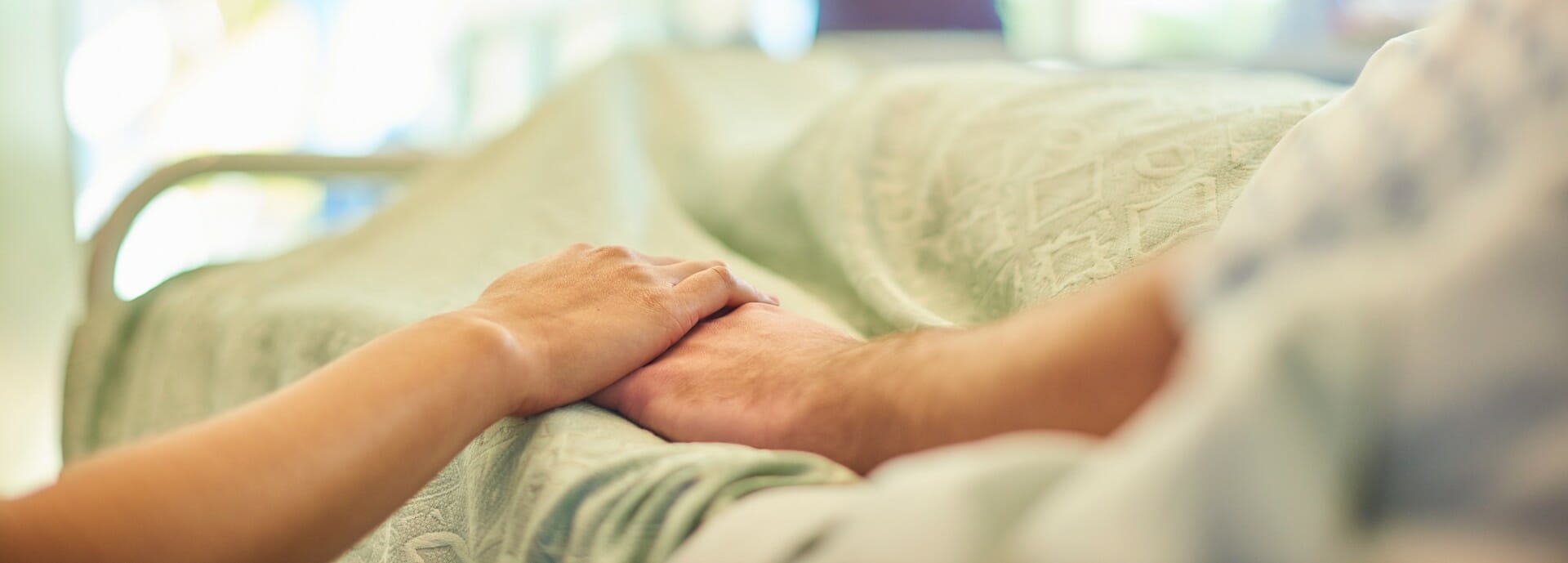
He would sleep on the hospital reclining chair, and every day, he had to rush home to cook for me.
The stress took a toll on him, and he started to develop migraine attacks. Even my surgeon sympathized with him.
My daughter helped to stand in for him after her exams were over. Meanwhile, my siblings chipped in to ease my husband’s burden in other household duties.
Finally, after nearly a month, I was allowed to go home. My surgeon warned that I would continue to vomit on and off.
Upon hearing that, I felt more depressed than ever.
Back home, I was so tired that I did not want to bathe, even though I felt sticky and smelly.
I never did get a proper bath or a hair wash during the stay at the hospital.
A few months later, I went back to work and told my manager of my intention to resign. He was extremely sympathetic and advised me to wait for the merger of commercial banks.
He allowed me to take as much sick leave as I needed and moved me to a less stressful unit. For that, I am eternally grateful.
It was the eve of Chinese New Year in 1999.

It was midnight, and I was heaving and coughing into the toilet bowl as fireworks flashed across the sky. It was a bittersweet moment.
The thought of living a life without me was taking a toll on my husband.
He became irrational and less tolerant, always losing his temper at our daughter. We had fights whenever I brought up the subject of my mortality.
My husband was afraid of losing me.
A visit from my youngest sister who lived overseas lifted our spirits. Then in December 1999, I handed in my request for early retirement.
My daughter had completed her SPM exams by then and requested a trip to Penang.
Even though my feet hurt and I felt exhausted with every little exertion, we booked an 8-day tour to West Malaysia and Haadyai.
I told my daughter that she would have to massage my feet and my husband offered to carry me if I could not walk. My daughter turned out to be a shopaholic — haha.
The trip tired me, nevertheless, I enjoyed it very much.
My body continued to deteriorate. My once full lips had grown thinner and my teeth became crooked.
My once rounded nose also started to look smaller and I began to walk like the Hunchback of Notre Dame.
The 2000s — Life After Retirement
I officially retired in January 2000.
And from that moment on, I did not have to rush to get ready for work.
Instead, I could take my time to enjoy the gentle breeze in my garden while sipping my favorite cup of tea.
Mornings were the best as I seldom vomited. But come the evenings, I would be practically glued to the toilet bowl.
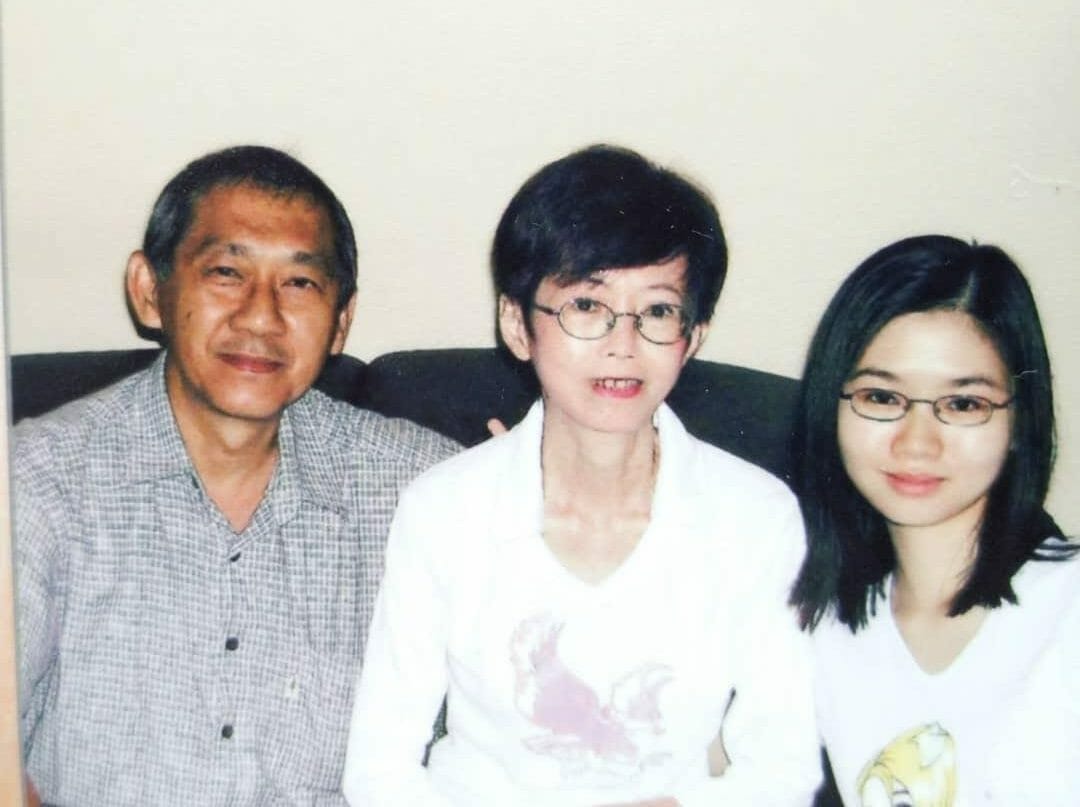 Photo taken sometime in 2000.
Photo taken sometime in 2000.
I spent my free time jotting down my thoughts and found them to be therapeutic.
I also became an avid fan of K-drama, with Winter Sonata and Jewel In the Palace becoming my favorites.
I taught my daughter how to cook and bake and for Chinese New Year, we cooked up a storm.
There was Buddha Jump Over The Wall, Braised 5-spice duck, cold dish, steamed red tilapia and fried mixed vegetables.
While I didn’t eat much, it was a delight to see my family enjoying the food.
I Was Still Miserable
And yet, I was still plagued by my decision to not have a second child. The depression got so bad that I considered taking my life.
Whenever my husband was at work and my daughter was in school, I would have suicidal thoughts.
The only reason that stopped me from taking my life was the fear of divine punishment after death.
Plagued with pain, vomit, diarrhea, and endless coughs, my quality of life was so low compared to what it was before. I’ll be brutally honest — I hated every moment of my life.
But my family did everything in their power to make life more comfortable for me.
One of my siblings modified the ground floor bathroom into a more user-friendly one.
My husband added castors to our stools so I could move about the house with ease. (I couldn’t walk properly by then.)
Then in 2001, during one of my conversations with my second sister, I asked her why God still hadn’t called me home to His kingdom.
She replied, “Sometimes, God wants us to live longer for a reason.”
When she said that, a light bulb suddenly lit in my head.
Perhaps God wanted me to finish my tale. I decided to distribute my journal to family and friends — I wanted to encourage those who were in similar situations.
But I knew that I was wasting away. My lungs were hardening, and my digestive system was failing.
It was only a matter of time before my time came.
So I decided to plan my own funeral. If I can’t control my life, I can at least make a grand exit, can’t I?
Epilogue
At this time, around 2002, my mother stopped writing her journal. Towards the end, she was confined to her bed and had to depend on morphine to withstand the pain.
Death finally came in the early morning of July 2004, and my mother welcomed it as a friend.
We held her funeral exactly as she had planned it, from playing her favorite song to the pastor reading the eulogy that she had prepared for her loved ones.
Two decades later, the world is still plagued by this mysterious disease. There is still no cure.
But the Scleroderma Foundation has worked with various organizations to raise awareness to educate people around the world about the gravity of this disease.
It is with hope that this article has opened up your eyes about Scleroderma.
For more stories like this, read: 4 Most Important Life Lessons from My Late Dad and She Went Through 3 Miscarriages, Fell into a Coma, and Watched Her Daughter Die in NICU. Here’s Her Story

More from Real People
She’s a Single Mom With 4 Kids and Severe Asthma — And Now the Landlord Wants Them Out
In Subang Perdana, a Malaysia Indian mother of four is doing her best to survive — raising her children alone …
“I Save RM1,000 More Than in Kuala Lumpur,” Shares Pharmacist Working in a Rural Town in Johor
This story is about a M'sian pharmacist who, despite the challenges of a saturated job market, carved out a fulfilling …
“He Wants It Every Night,” Shares M’sian Woman Who Regrets Marrying Her ‘Perfect’ Husband
This story is shared by an anonymous M’sian woman who regrets marrying her husband because he insists on consummating their …






